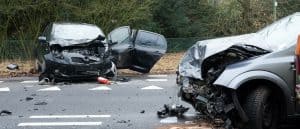
When learning to drive, everyone learns about blind spots and the dangers that they can present. However, newly licensed drivers, and even those who have been driving for years, don’t always think about blind spots when they are on the road. Drivers may have other things on their minds, and they don’t realize just how much danger and damage could occur if they aren’t careful. It’s important to understand where your blind spots are located whenever you’re behind the wheel.
What Are Blind Spots?
A blind spot is an area around the vehicle that obscures your vision and that you can’t see without turning around or moving your head. It’s a spot that your mirrors and cameras don’t cover. The length, height, and design of a vehicle often determine where the blind spots are located. However, other factors could create blind spots. This includes the dashboard’s design and size, the windshield and pillars, and the number of passengers in the vehicle.
For a free legal consultation, call 414-276-6666
Blind Spots on Semi-Trucks
Like other vehicles, semi-trucks generally have four major blind spots. Let’s look at each of these major zones, sometimes called “no-zones,” to see where they’re located and what it means for the semi driver and the vehicles around the truck.
Front
The blind spot on the front of the semi is right in front of the cab. Because the drivers of these trucks are sitting up so high, it means that they will not be able to see the vehicles that are directly in front of them. For this reason, other drivers should be aware of this and be thoughtful regarding the rear of their car and the front of the semi. When passing, drivers should generally make sure that they have significant distance in front of them and behind them, especially when near semi-trucks. Keep in mind that it can be difficult for the semi-trucks to stop, furtherer complicating the matter. Unfortunately, the driver would not even know to apply the brakes if they cannot see your vehicle in front of them.
Left
The left blind spot in a semi is located to the left and behind the cab. It’s a generally smaller blind spot than the right side because the driver is located on the left side of the truck and can get a better angle.
Right
The right side of the semi can create a significant blind spot that has the potential to be dangerous. Drivers should be aware of this and adjust their driving accordingly.
Rear/Back
This portion of the semi is directly behind the cargo area or trailer on the truck. Keep in mind that because of the design of the truck, there’s not a traditional rearview mirror that works similarly to a typical passenger vehicle. It is generally more difficult for a truck driver to see directly behind the truck unless they have cameras installed. You’ll want to be sure that you provide ample space to keep yourself and others on the road as safe as possible. Each year, there are approximately half a million trucking accidents in the United States alone, and 5,000 of those accidents result in death.
Drivers who are near semis and other large vehicles, such as a school bus or other types of buses, should always proceed with caution, particularly when passing or being passed by these vehicles. There can be significant blind spots around these vehicles, which can make it difficult for the driver to see. Allow for plenty of room whenever a large vehicle is changing lanes, backing up, or making a turn.
Generally, a defensive driving approach is an important mindset. Please remember that you need to have significant following and driving distance when around these types of trucks due to the size of these vehicles in addition to their blind spots.
Where Are Blind Spots on Cars and SUVs?
You may find that the blind spots on cars and SUVs are similar in some capacity to those found on semi-trucks, but they tend not to be quite as severe. The blind spots are located in the front, back, and sides of the vehicle. The sides can be quite challenging with these types of vehicles. To check these blind spots, drivers generally may have to look over their shoulders. You will look left and right out of the side windows to check those side blind spots. This may help let you know if a vehicle has crept into a dangerous position. Always be careful when checking blind spots. Knowing where your blind spots are located will help you understand where the blind spots are located on other vehicles. However, each vehicle may have its own set of unique blind spots due to various factors. We can all be cautious and help make the Wisconsin roadways a safer place.
Click to contact our personal injury lawyers today
What If You’ve Been in an Accident?
Have you been in an accident that you believe could have been the result of someone not checking their blind spots? Were you seriously injured because of someone’s negligence? It is important to seek out legal advice as soon as practical after a crash. Please contact Gruber Law Offices for a free and confidential consultation. We have an aggressive, passionate, and dedicated team that will help you get the compensation you deserve.
Have you or a loved one been in a car accident? Reach out to Gruber Law Offices for help.
Disclaimer: This post provides general information but is not legal advice and should not be construed as legal advice.
Call or text 414-276-6666 or complete a Free Case Evaluation form

















